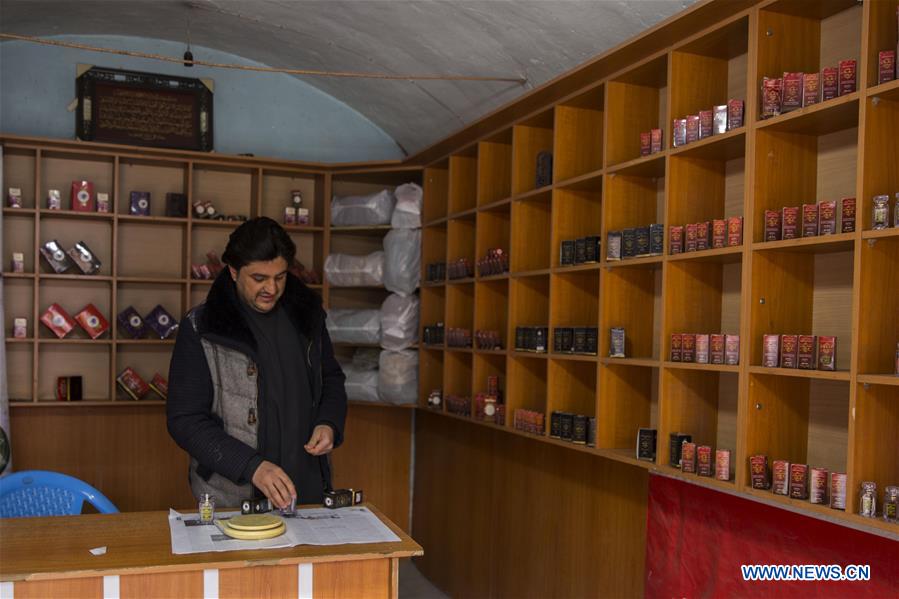
An Afghan businessman waits for customers at a saffron shop in Herat Province, Afghanistan, Jan. 11, 2020. Afghan farmers had harvested 22 percent more saffron last year than in 2018, hoping the golden spice become a legitimate replacement to opium poppy in the war-affected country. (Photo by Elaha Sahel/Xinhua)
KABUL, Jan. 9 (Xinhua) -- Afghan farmers had harvested 22 percent more saffron last year than in 2018, hoping the golden spice become a legitimate replacement to poppy opium in the war-affected country.
This year's saffron harvests, according to Afghans involved in saffron business reached to over 19 tons, showing 22 percent increase comparing to only 16 tons in 2018.
"Statistics shows that farmers collected 19,469 kilograms of saffron in 2019, a 22 percent increase from over 37,500 hectares of cultivated lands in different provinces of the country, highly expected to have up to 27 million U.S. dollar income, this year," Bashir Ahmad Rashidi, head of Afghanistan Saffron Planters National Union told Xinhua recently.
China, India and the United Arab Emirates are the main customers of saffron from Afghanistan, Rashidi said.
However, he observed that some companies export low or non-standard saffron to other countries, which is a blow to the reputation of the Afghan saffron at the global markets.
"We are still facing serious problems in standard packing and processing saffron and we need standard machineries and devices to dry up saffron," said Haji Abdul Shakor Rahimi, head of Nab group, a local saffron processing company.
Currently, the price of each kilogram of saffron is between 1,000 and 1,500 U.S. dollar at the world markets, with domestically vended 70,000 afghani (909 U.S. dollars) while the price could reach to 3,000 U.S. dollar per kilogram, if producers receive enough support and cooperation from the government and related agencies, Rahimi maintained.
Balkh and Sar-e-Pul in the country's north, Kandahar and Uruzgan in the south and Dykundi in Afghanistan center have most of saffron farmlands, after Herat in the west with up to 92 percent of total saffron production in 2019.
Good quality saffron production and offering it with reasonable prices at the global markets, was one of the demands of saffron producers. "We are striving to have further achievements in producing and exporting more high quality saffron this year," Rahimi further said.
Promotion of the valuable crop has created jobs for thousands of people including women and improved their economic situation in many Afghan provinces.
Hamida, a Herati woman who was busy in cleaning and sorting saffron flowers was happy with her work because she can make enough money to support her family of five members all children.
"I am a widow and have five orphans; I clean and sort out saffron flowers. Our living condition has improved from my work on saffron farmlands," she told Xinhua recently.
Cultivation of the risk-free, lucrative and viable saffron, according to many Afghans, can serve as a suitable alternative to poppy and bring self-esteem to the Afghan farmers to improve their economic condition.